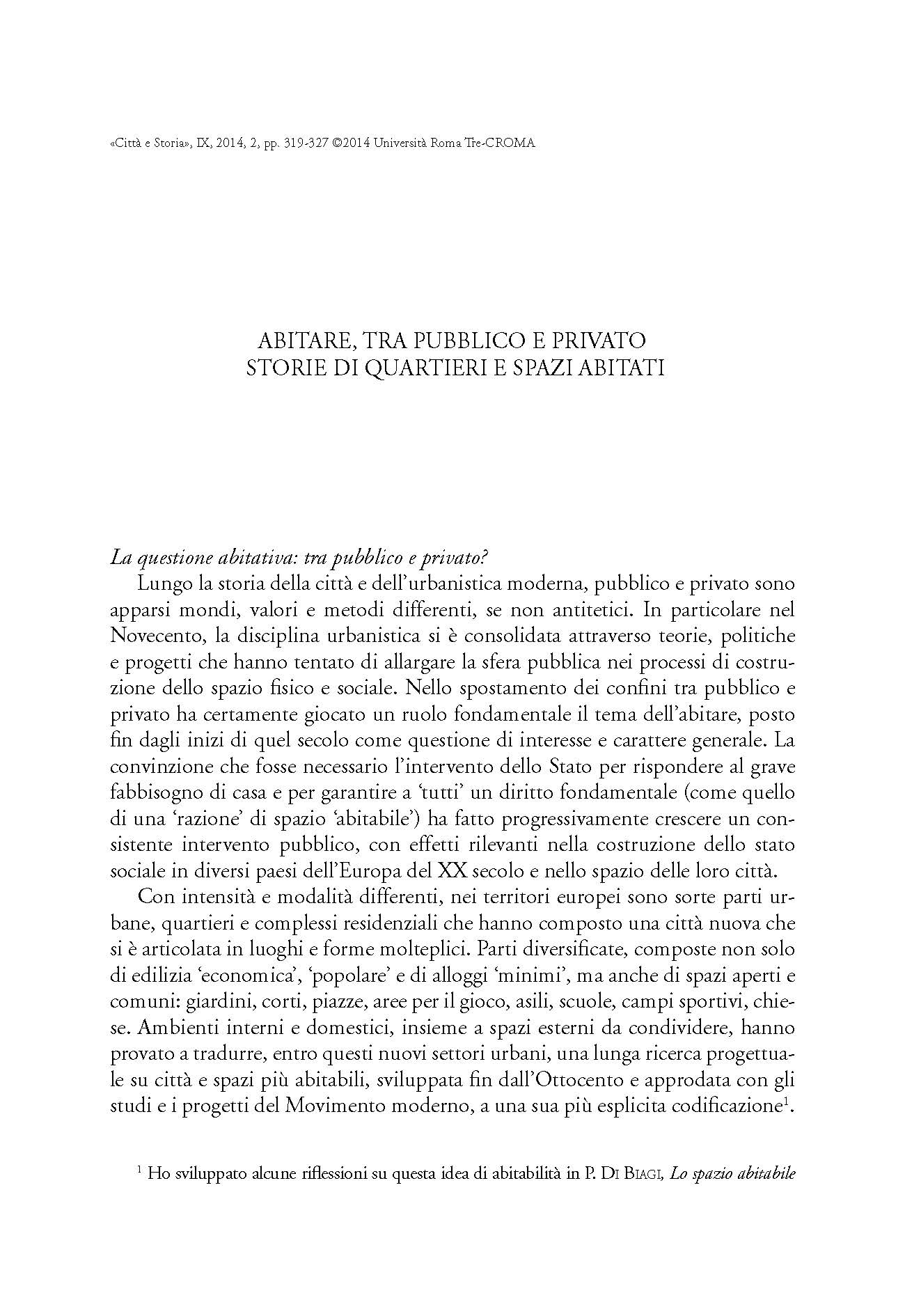Abitare, tra pubblico e privato. Storie di quartieri e spazi abitati
6,00 €
Social housing estates and settlements constitute a remarkable lens to observe the plurality of roles that the multifaceted relationship between public and private have in the processes of construction of the city, as well as in the shaping of the everyday life that takes place within these urban sectors. Going back today to the discourses on the twentieth-century public city and returning, even physically, within its constructions, help us to understand how, within this inhabited city, public and private realms are not acting as opposite categories but rather assume a plurality of different meanings, contributing to enrich a design vocabulary that may contribute to their rehabilitation. In this sense, it seems helpful to address multiple looks and to create a plurality of narratives about the twentiethcentury residential neighborhoods. In particular, multi-disciplinary approaches to the study of the public city can converge in the reconstruction of biographies of neighborhoods and spaces, in the collection of minutes and plural tales, capable of observing these urban sectors not only through the policies and projects that generated them, but also as places where several people spent and spend their lives every day.
Social housing estates and settlements constitute a remarkable lens to observe the plurality of roles that the multifaceted relationship between public and private have in the processes of construction of the city, as well as in the shaping of the everyday life that takes place within these urban sectors. Going back today to the discourses on the twentieth-century public city and returning, even physically, within its constructions, help us to understand how, within this inhabited city, public and private realms are not acting as opposite categories but rather assume a plurality of different meanings, contributing to enrich a design vocabulary that may contribute to their rehabilitation. In this sense, it seems helpful to address multiple looks and to create a plurality of narratives about the twentiethcentury residential neighborhoods. In particular, multi-disciplinary approaches to the study of the public city can converge in the reconstruction of biographies of neighborhoods and spaces, in the collection of minutes and plural tales, capable of observing these urban sectors not only through the policies and projects that generated them, but also as places where several people spent and spend their lives every day.

